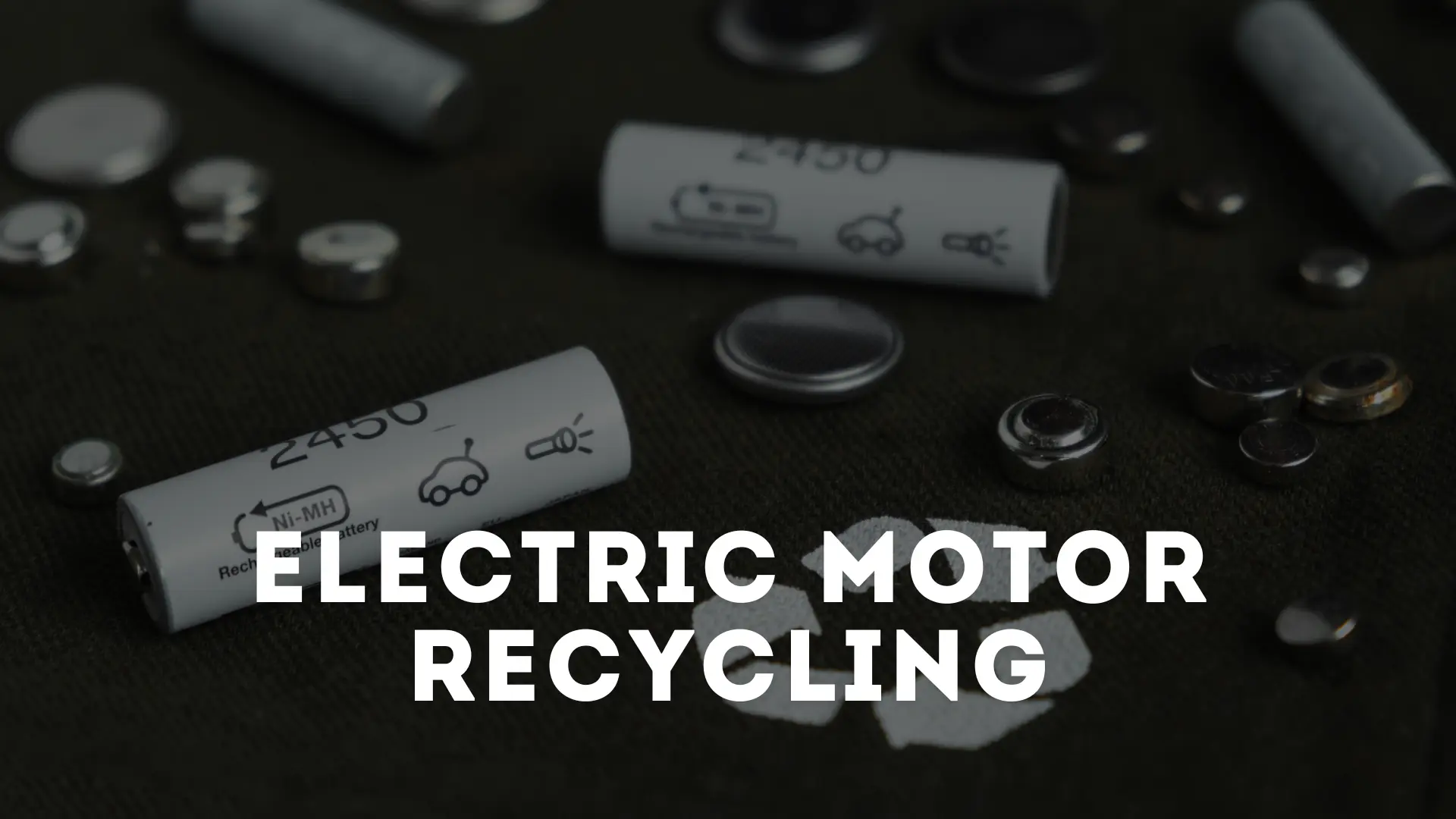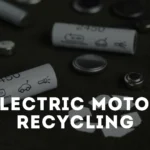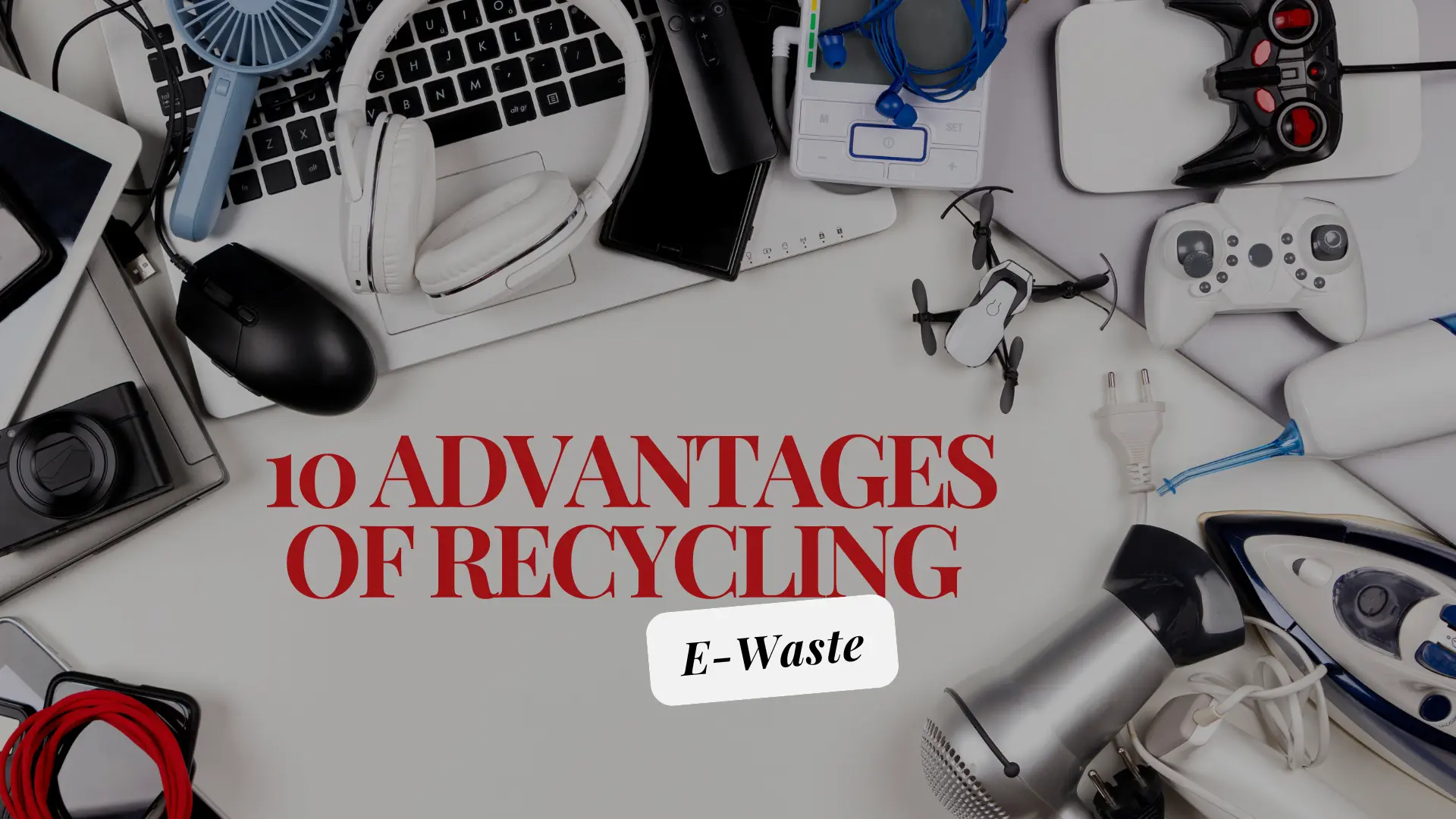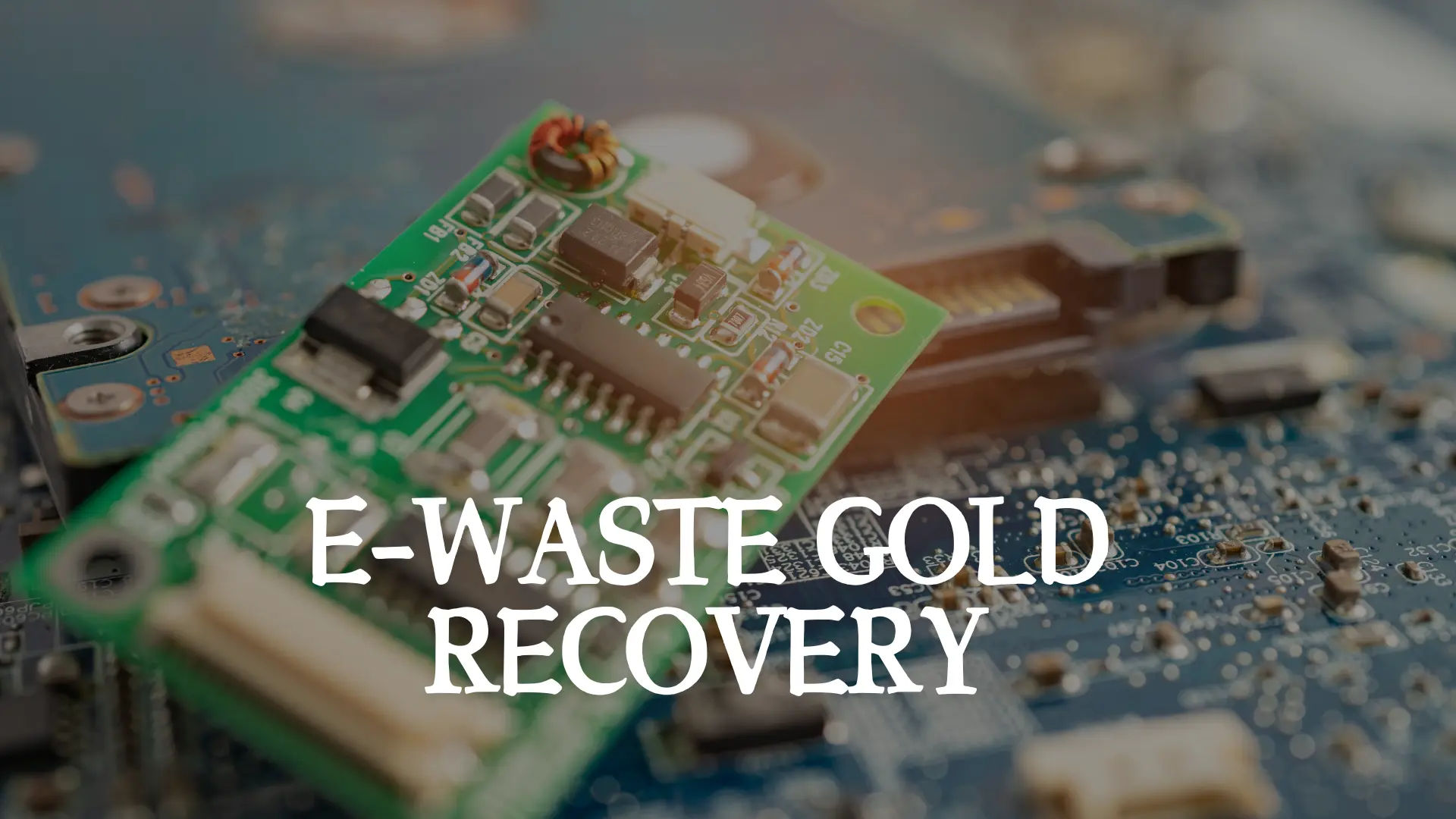Recycling electric motors—it’s a straightforward concept! This article delves into the process of reusing electric motors. Join me as we uncover valuable insights about these machines and how to recycle them efficiently. Together, we’ll explore the advantages of this practice, such as conserving resources and protecting the environment. Let’s dive in!
1. What are Electric Motors?
We all know that an electric motor is an essential device that converts electrical energy into mechanical power. You might wonder if an electric generator is the same as a motor. Interestingly, a generator is mechanically identical to a motor but functions in reverse, converting mechanical power back into electrical energy.
Electric motors operate through the interaction between the machine’s magnetic field and the current flowing through wire windings. This interaction generates torque applied to the motor’s shaft. The principle is straightforward: a current-carrying conductor creates a magnetic field around it.
Imagine two bar magnets facing each other with a small gap in between. Now, take a piece of conducting wire and form it into a loop, placing it between the magnets, where it’s influenced by their fields. Connect the ends of the loop to a battery. What do you observe? Electricity flows through your circuit, and the loop starts to move!
So, what causes this movement? The magnetic field of the magnets interacts with the current flowing through the conductor, transforming the loop into a magnet itself. One side of the loop attracts the north pole, while the other is drawn to the south pole, creating continuous rotation.
And that’s how electric motors function! Understanding this process is crucial for appreciating the significance of recycling these machines in reducing waste and conserving resources.
Explore E-Waste Management and Recycling Solutions
Find top machinery, plants, tools, resources, companies, and consultancy for comprehensive electric motor recycling needs.
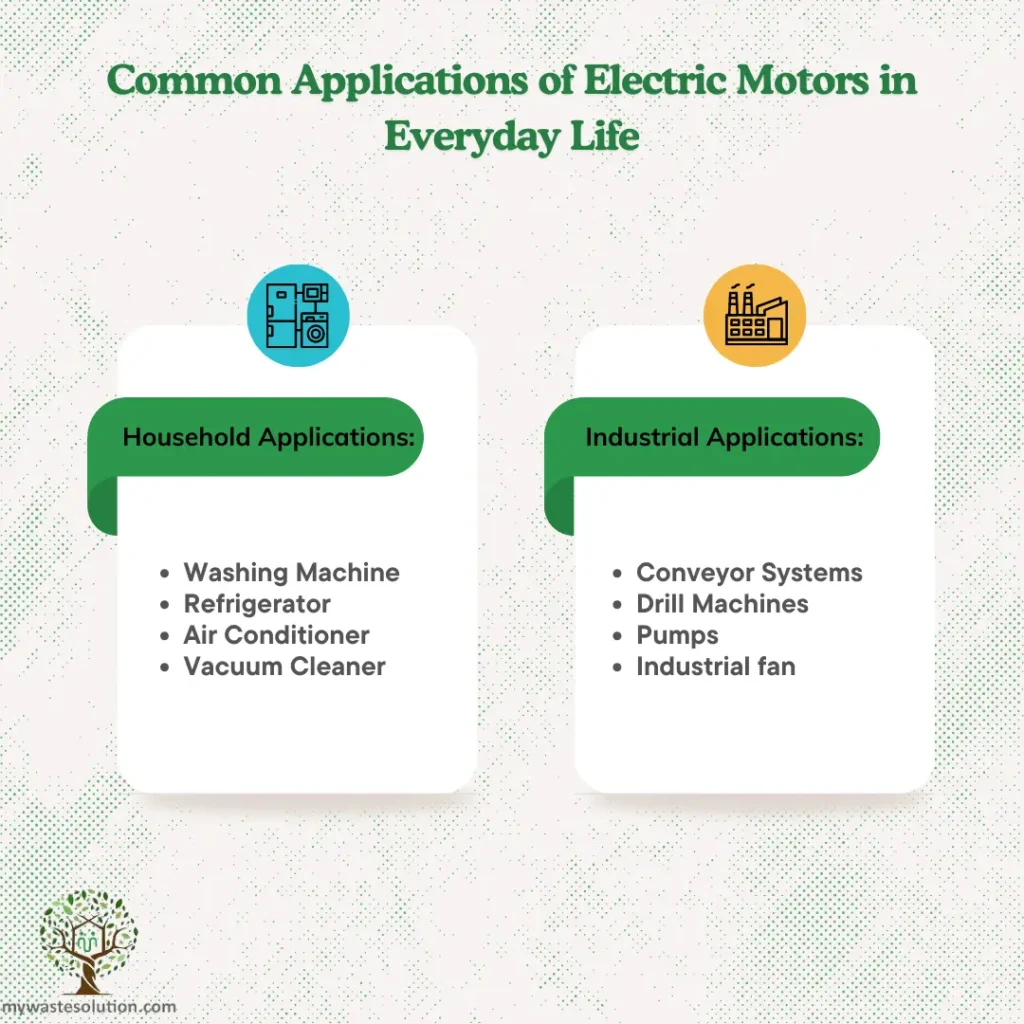
1.1 Electric Motor Uses
Electric motors are found in a wide range of commercially available devices and machinery, as well as in many household appliances. They play a vital role in our daily lives, powering everything from simple tools to complex industrial equipment. Here are some common examples where electric motors are used:
- Blowers
- Drills
- Washing Machines
- Water Pumps
- Hard Disc Drives
- Industrial Fans
- Industrial Equipment
- Microwaves
- Hand Tools
- Air Conditioners
- Power Supplies
- Starters
- Computers
2. Components of Electric Motors
Before we begin the process of reusing electric motors, it’s essential to understand the key parts that make up these machines. Each of these elements plays a crucial role in the efficiency of the motor. Moreover, understanding these parts simplifies the recycling process! Here are the primary elements of electric motors and their functions:
Table: Components of electric motors
| Components of electric motor | Working of components |
| Rotor | The rotor is the moving part that delivers mechanical power. It typically contains conductors that carry currents, which the stator’s magnetic field uses to turn the shaft. Some rotors use permanent magnets, while the stator holds the conductors, offering higher efficiency across a wider speed and power range. |
| Bearings | The rotor is supported by bearings, which allow the rotor to turn on its axis. The bearings are in turn supported by the motor housing. |
| Stator | The stator surrounds the rotor, and usually holds field magnets, which are either electromagnets consisting of wire windings around a ferromagnetic iron core or permanent magnets. These create a magnetic field that passes through the rotor armature, exerting force on the windings. The stator core is made up of many thin metal sheets that are insulated from each other, called laminations. |
| Armature | The armature consists of wire windings. It’s on a ferromagnetic core. Electric current passing through the wire causes the magnetic field from the field magnet to exert a force (Lorentz force) on it, turning the rotor, which delivers the mechanical output. Windings are wires that are laid in coils, usually wrapped around a laminated, soft, iron, ferromagnetic core so as to form magnetic poles when energised with current. |
| Commutator | A commutator is a rotary electric switch that supplies current to the rotor, reversing the flow in the rotor windings as the shaft rotates. It consists of a cylinder with metal contact segments on the armature and brushes made of soft conductive material like carbon that press against it. As the commutator rotates, the brushes make contact with successive segments, supplying current to the rotor. The commutator reverses the current direction in the rotor windings every half turn (180°), ensuring the torque remains consistent in one direction. |
The two mechanical parts of an electric motor are the rotor, which moves, and the stator, which remains stationary. There are also two electrical components: magnets and an armature. One is attached to the rotor, and the other connects to the stator, forming a magnetic circuit.
Struggling with electric motor recycling needs? Connect with top consultants specializing in electric motor recycling solutions.
Connect NowNow, let’s dive into the recycling of these essential machines!
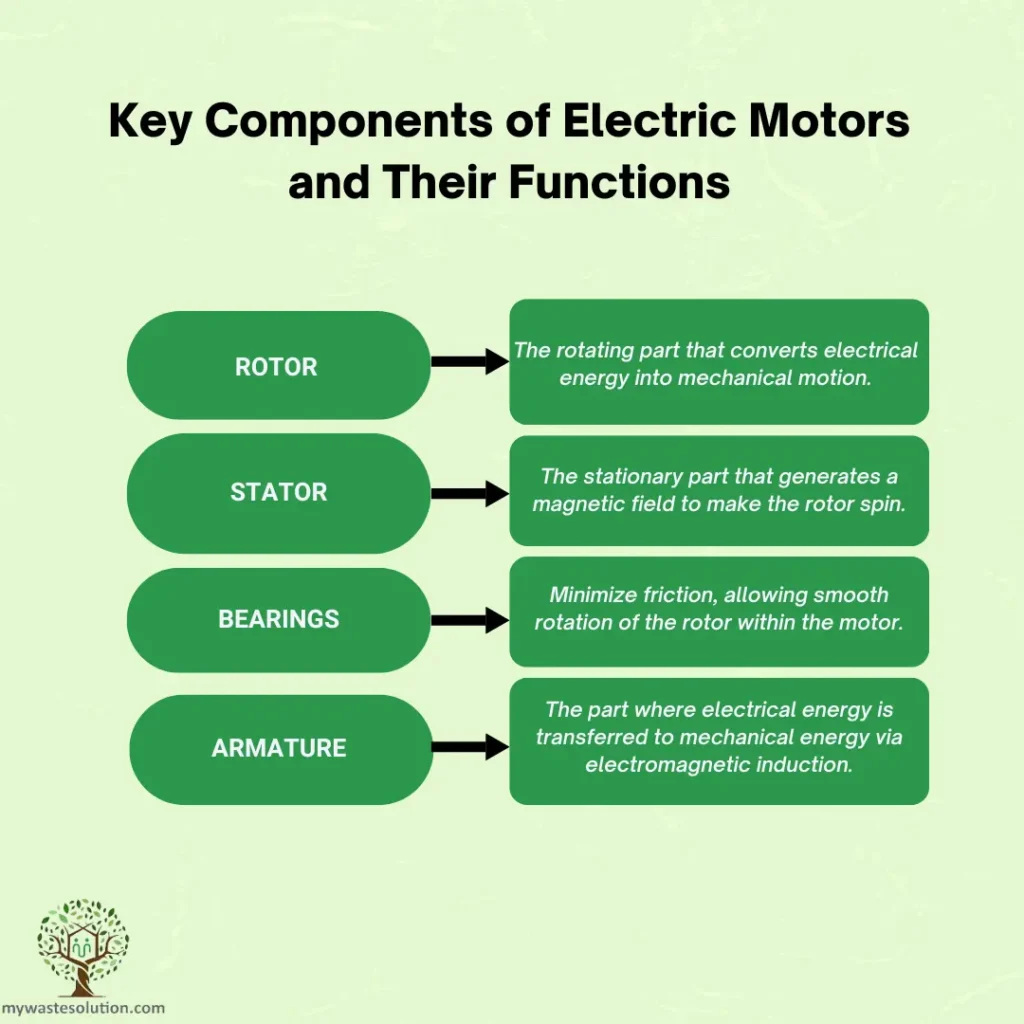
3. Recycling Electric Motors
Recycling electric motors primarily occurs on a large scale, offering a fantastic opportunity to generate revenue as evolving technologies enhance recycling efficiency! We know that electric motors require raw materials such as aluminium, copper, and other valuable minerals. By recycling electric motors, we also conserve the energy needed to extract these minerals from the Earth’s crust.
Find and connect with leading companies specializing in electric motor recycling solutions.
Get Connected Today
Starting an electric motor recycling initiative is quite feasible! It requires proper management and enthusiasm to promote a sustainable future. Let’s break down the process:
Collection of Scrap: The first step involves gathering as many electric motors as possible, which increases the potential to recover sufficient copper and other valuable minerals.
Hammering Process: The collected scrap undergoes a simple hammering process. A hammer mill breaks the metallic casing of the motor.
Separation of Components: After hammering, the team separates the components of the electric motor and categorizes them according to their materials.
Recycling: Finally, the separated components go to different recycling points for processing.
Let’s take an overview of the key components and steps involved in dismantling electric motors
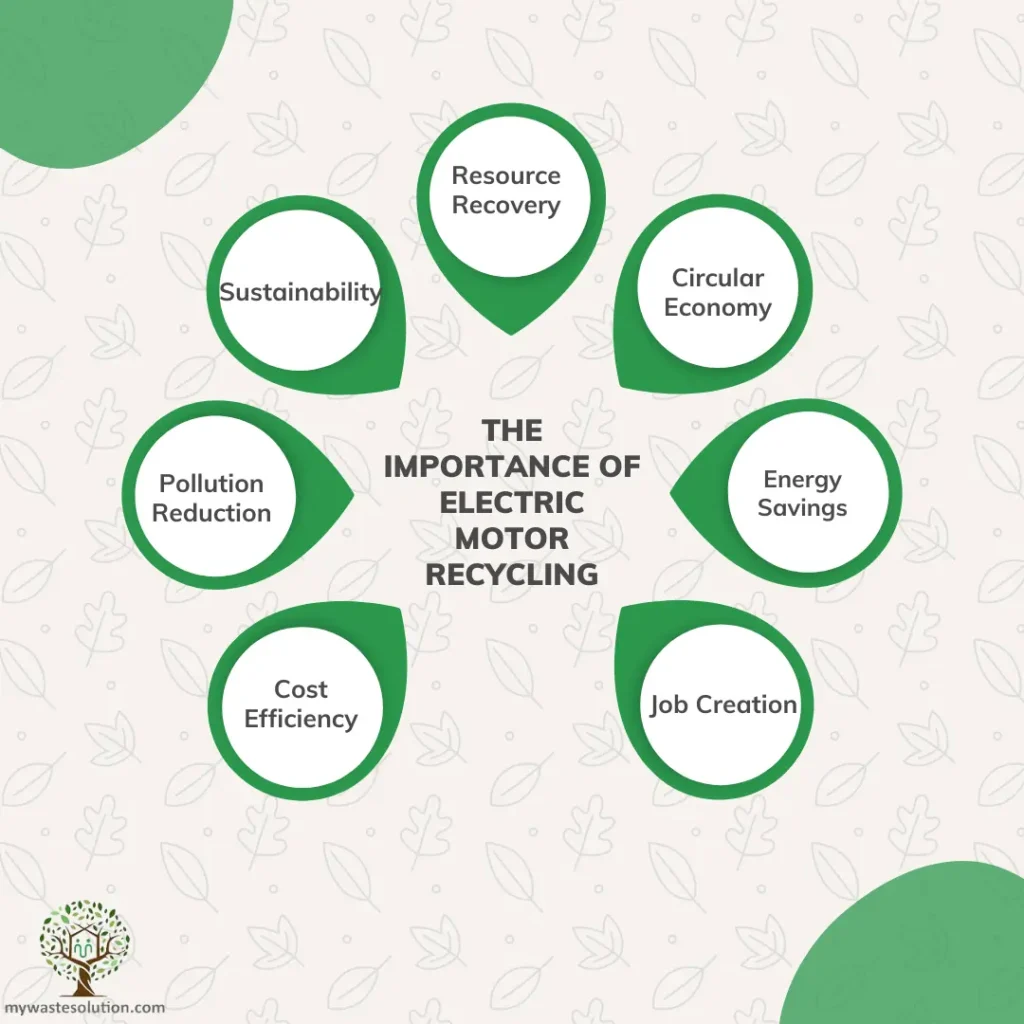
3.1 Impact of Electric Motor Recycling
Collection: The recycling process begins with collecting scrap electric motors. Collecting as many as possible is crucial!
Primary Inspection: Next, a primary inspection assesses the product’s physical condition through tests such as resistance measurement and insulation tests. This step identifies electrical, mechanical, or both types of faults.
Disassembly: Following this, disassembly doesn’t adhere to a strict reverse order due to varying degradation and missing components. Some parts, like the rotor, may be reused without full disassembly, while others, such as bearings and windings, require reconditioning.
Inspection, Fault Diagnosis, and Final Tests: Each component is inspected to assess its condition and identify faults. Components are categorized as: (a) Directly reusable, (b) Reusable after repair, (c) Not repairable. Repairable components undergo cleaning and fault diagnosis; irreparable ones are disposed of. Ultimately, reconditioning strategies depend on the component’s state and failure mode. The stator and rotor are assembled before final testing, completing the product.
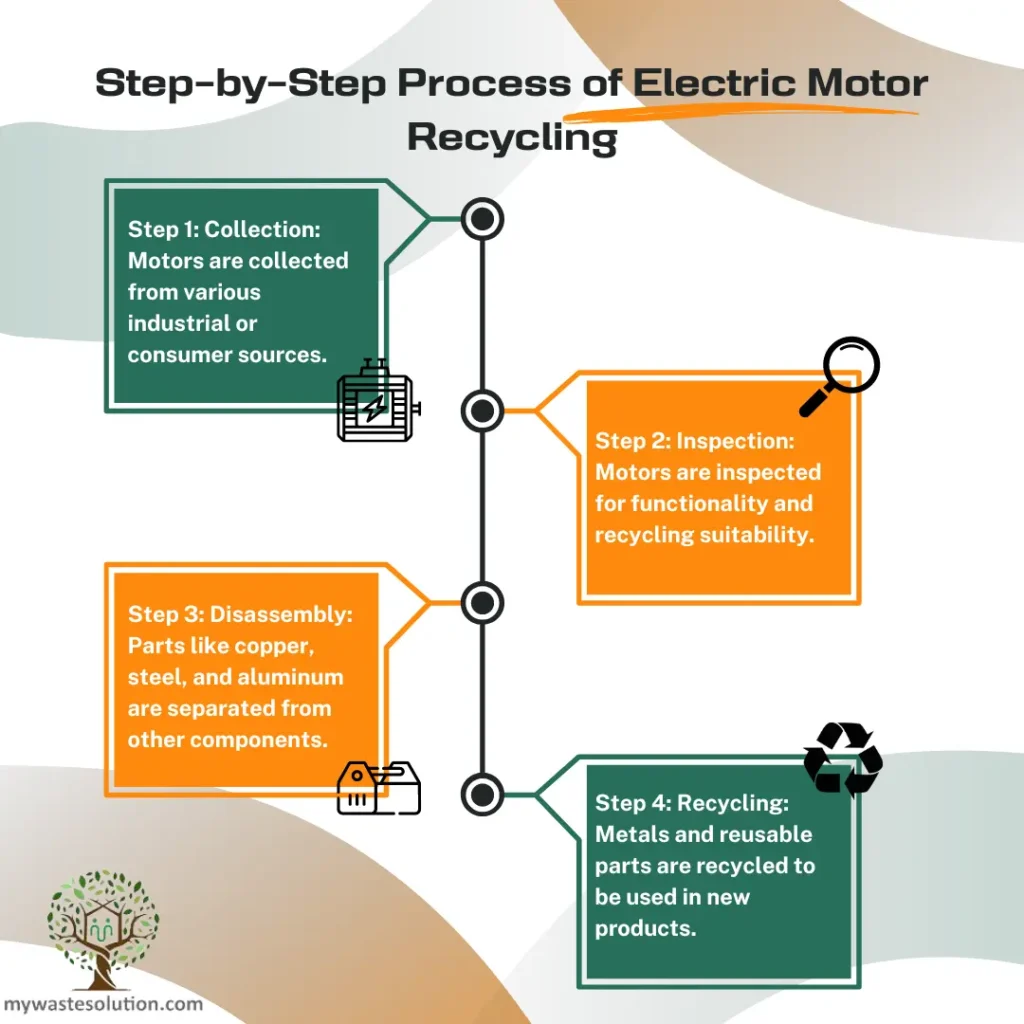
Following these steps ensures effective electric motor recycling, maximizing resource recovery and minimizing waste.
Firstly, most electric motors contain valuable copper and aluminium. Moreover, their exterior typically consists of steel, protecting internal parts. Notably, the more copper a motor contains, the more valuable it is for recyclers.
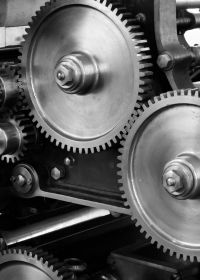
Explore the best electric motor waste treatment and recycling machinery and equipments for your industrial needs.
Connect TodayAdditionally, aluminium is another high-value nonferrous metal found in electric motors. Although recyclable, steel doesn’t match the value of copper or aluminium. Furthermore, wood or plastic on motors are contaminants that reduce recycling value.
In terms of size, electric motors vary, from small ones in devices and toys to larger units. Specifically, smaller motors are less desirable due to lower metal content, while larger motors (under 2,000 pounds) are in demand. Conversely, motors over 2,000 pounds are classified as oversized.
If you’re unsure about recycling, you can sell damaged devices containing electric motors to professional recyclers. This not only helps you earn money but also supports the circular economy by promoting recycling and resource recovery!
4. Conclusion
Electric motors have gained significant attention due to their growing adoption across various industrial sectors, including automotive, aerospace, industrial machinery, and consumer appliances. They consume approximately 40% of the world’s electricity and contribute to around 13% of global carbon emissions. The electric motor market is projected to reach USD 169 billion by 2026, growing at an annual rate of 6.9% from an estimated USD 113 billion in 2020. A 2020 report by the European Commission predicts that by 2050, the EU will require 15 times more minerals such as cobalt and 10 times more rare earth materials—including copper, aluminium, and steel—compared to current consumption levels.
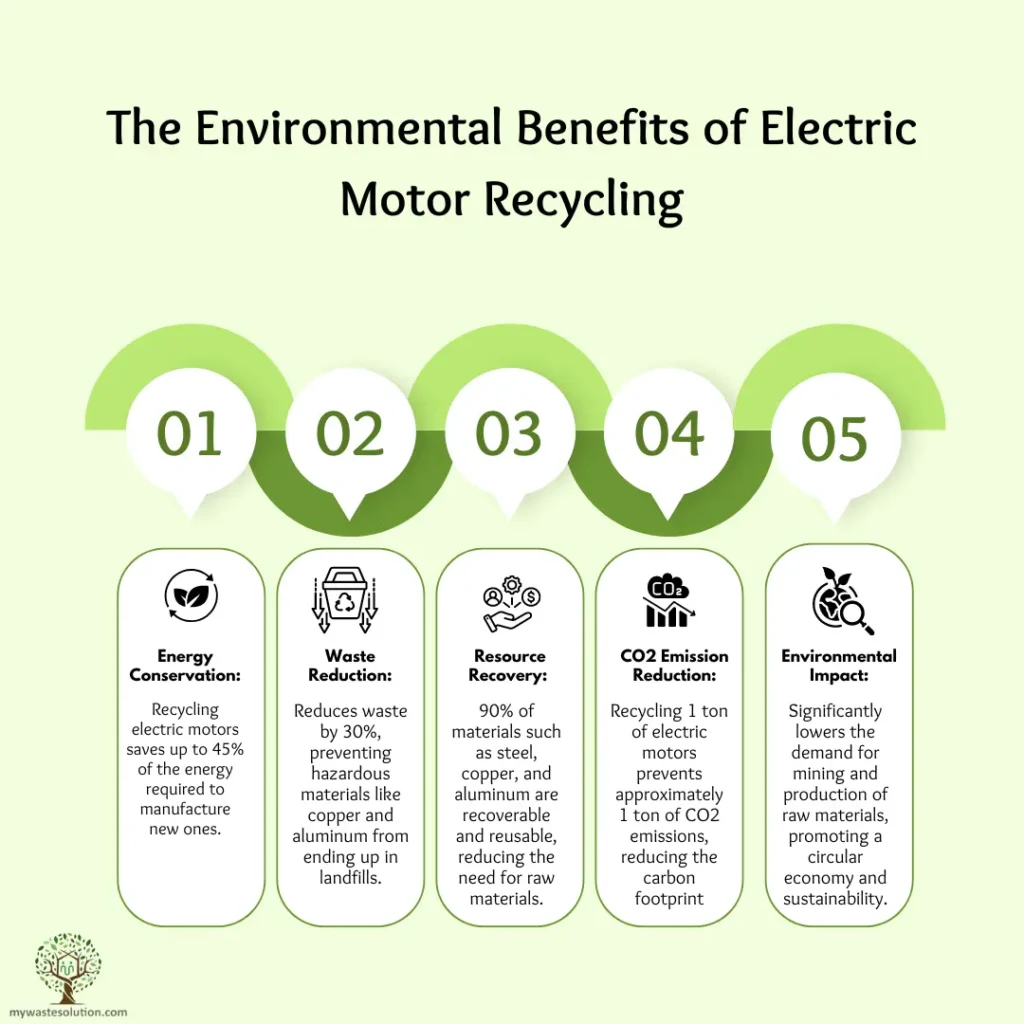
However, the global recovery rate for high-value, rare earth materials used in these devices is less than 3%, despite these materials constituting 40–60% of the costs in a permanent magnet setup. Moreover, dumping waste in landfillscan harm the environment, making resource recovery a key strategy for reducing motor waste. Additionally, recyclinghelps protect the environment from the hazardous effects of improper disposal. Therefore, it is our responsibility to manage waste and prioritize reverse processes whenever possible.
Struggling with e-waste buying and selling issues? Connect with e-waste buyers and sellers here.
Buyer Listings Seller ListingsFurthermore, recovering materials from old motors also conserves natural resources. Valuable raw materials, particularly copper—a key component of these machines—are essential for their operation. Since copper is costly and widely used in many electrical devices, instead of continually extracting it from the Earth, reclaiming materials from electric motors supports a sustainable future and promotes a circular economy. In conclusion, the next time you encounter these machines, remember to recycle!
